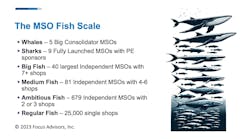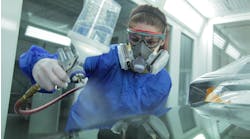For Caliber’s Supply Chain Vice President Angie Babin, being named Chair of the nonprofit organization TechForce is not only an honor, but a sign to the collision repair industry just how far it’s evolved, and how it must continue that trend to overcome its labor and supply chain shortages.
“It’s an honor and I hope it shows that anyone can have a place in this industry,” she says. “I’ve been in the industry almost my entire career, and with the time I’ve spent in (it), I have seen the opportunities for technicians, and how hardworking they are. I’ve become very passionate about promoting this great career opportunity for people who are hands-on, and even somewhat engineering-minded with the ways cars are being built in terms of electric vehicles.
Changing Outsiders’ Views of Collision Repair
Babin notes TechForce has established and continues to advance a litany of opportunities for younger generations who might view the industry as outdated or low paying.
“One of the biggest things we’re very proud of is our TechForce Community. It’s a network for anyone in and interested in the industry,” she says. The Community’s most important aspect is the network of industry resources it provides, and also as a platform for promoting tech careers in collision repair.
“That’s one of the big things we launched last year, and it has grown exponentially in less than a year,“ she notes. “We have things like STEM center trucks, which provide hands-on activities, which really promotes the technician workforce. So it’s not just all about getting people into the industry, however young they may be, but it’s also about making people feel proud that they are technicians.”
Other campaigns include “The Pathfinder,” which targets students and parents and is a learning style assessment to see if collision repair is the right path for them. In late summer TechForce hosts an event titled “Because I’m a Tech,” which promotes the lifestyle of technicians. “The collision repair industry has a stigma that it’s a “blue collar” industry, but we like to call it the “new collar” industry,” she adds. “We need to be proud of (being a technician) as a career, because it helps keep transportation going, and it generates very good income.”
The organization has also launched several campaigns and contests geared toward females, including a popular weekly social media aspect called “Women Techs Rock” which helps promote women in the industry.
Major Gaps in an Evolving Industry
Babin says It’s no secret that the collision repair industry is certainly changing and quickly heading more toward STEM-like opportunities, but the technician shortage has slowed how quickly the industry has been able to adapt. “Repairing an electric vehicle, for example, takes advanced training, and that includes jobs like calibration and scanning,” she says, “so it’s concerning that when one of these vehicles comes into a shop for repairs and many times these important steps aren’t even being completed. The most pressing issues that need to be addressed in the industry aren’t new; it’s something we’ve seen for awhile and COVID has exacerbated (the labor shortage). The collision industry is going to require 100,000 new auto repair techs through 2025.”
So what can the industry as a whole do to help alleviate the problem? A big part of the solution is having companies in the industry focused on more recruitment. Caliber, for example, is engaging with local schools and colleges so students understand there are many different opportunities to grow their careers and have a higher earning potential. Babin notes Caliber is also expanding things like its technician apprentice program and has already invested millions of dollars to provide no-cost apprentice training outside of that, providing individuals with a career path to become body techs.
Regarding the ongoing supply chain issues, Babin says there are a few strategies being implemented to help with the shortage.
“I wish I had a crystal ball to be able to tell you the exact solution,” she says. “I’ve reached out to many outside experts as well, and it’s affecting things that people need and do across a lot of industries. What I do know is that many of our supply partners are doing everything they can. There are companies out there that are strategically staying in front of it and buying extra supply. And if you look at shipping and how that has affected us, once a part is shipped, it sits in the channel until it can be unloaded, and you need labor to unload it and you need people to drive the trucks to get those supplies where they need to go.”
In the end, Babin says there are no shortcuts to the industry’s current headaches. However, it’s important everyone work together to ensure a brighter future moving forward.
“We have to look at the long term, so a lot of these things we’re doing now are going to secure the industry as a whole, so not just Caliber, but Caliber and TechForce; we want the entire industry to be successful,” she says. “So putting our heads together to implement more programs to drive people toward collision repair as a career, that’s really what’s going to be most helpful for everyone in the long term.”




